It’s so easy to socially distance yourself in Utah, especially if you’re heading out to the West Desert. We did a little day trip around Eureka on Memorial Day. I heard the parks here were absolute zoos this past weekend, but (as usual) the ghost towns were empty. I think we saw a handful of people in Eureka (not a ghost town) and that was it. LOTS of people and campers headed to Little Sahara and Great Basin, but none stopped where we did. We headed south down Highway 68, which is bordered by farm fields (we saw at least 30 hawks and ospreys out hunting) and Utah Lake. Before we turned west onto Highway 6, I stopped to grab a shot of an old Sinclair station in Elberta, a town named for a peach.
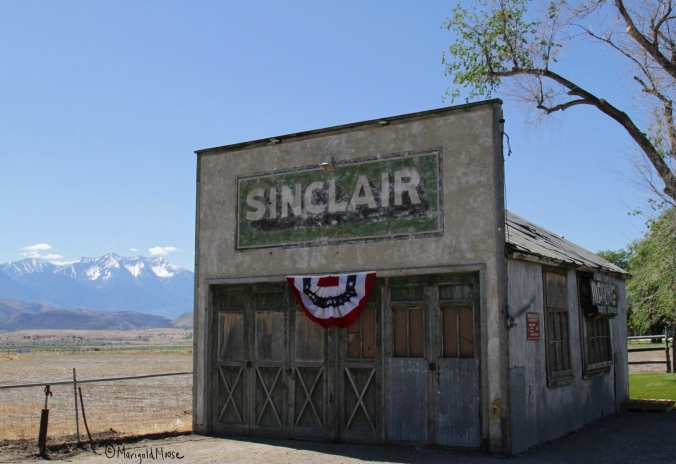
Sinclair Station in Elberta, Utah on Highway 6.
It’s obviously abandoned (there was an old gas pump there until about 2013 or so) but well-maintained and there’s even a picnic bench behind it. And it’s much more picturesque than the equally abandoned Amoco across the street.
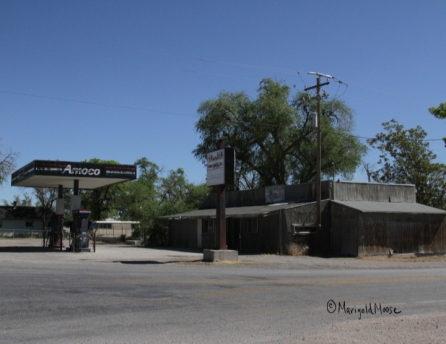
Sorry, Amoco. You’re just not *quite* as cute as your Sinclair sister across the street.
Anyway, we started out by going to Dividend, which is home to the abandoned Tintic lead mine. Several years ago, before we moved out west, we explored the abandoned smelter and structures in the hills and were intending to go do that again. Well, (we did not know this until driving through) the mine and area has been on extreme lock down due to a very sad event in which two local teenagers were murdered and thrown in an abandoned mine shaft on the property (warning: the linked story is very disturbing). There is a nice (very large) memorial set up for the teens and most areas are now fenced off (and the mine shaft itself has been fenced). Some friends told us the property owner has security guards posted in the area, if you were thinking of ignoring the many posted “no trespassing” signs, FYI. The road through the area is still public and actually is a nice drive with some beautiful scenery, especially when you climb up the mountain. The event definitely puts a pall over the area, though. The only structure you can see easily from the road is part of an old bridge (below).
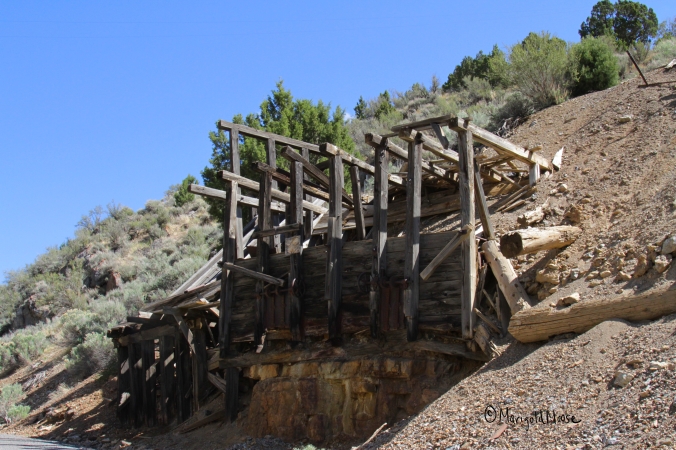
Tintic mine bridge ruins.
The area is also home to many sheep, and we saw a lot of lambs (they are really very cute, but as my husband reminds me they do not smell the best so I should not try to take one home). The sheep in the area are tagged with hearts, which is also very sweet. They were all freshly shorn and looked really well-cared for and happy. I mean, look at this sheep paradise!
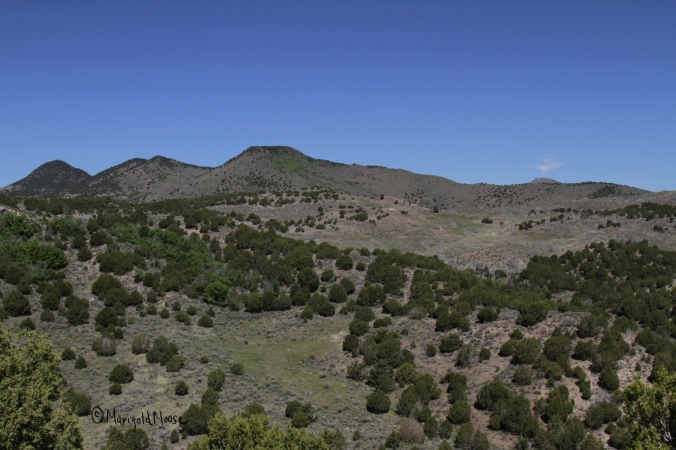
There are actually many sheep in this picture! Looking west.
The area has some spectacular views of Lake Utah as well, it was a bit hazy when we went and I struggled with crystal clear pictures, so choose your days if you want better pictures than what I got.
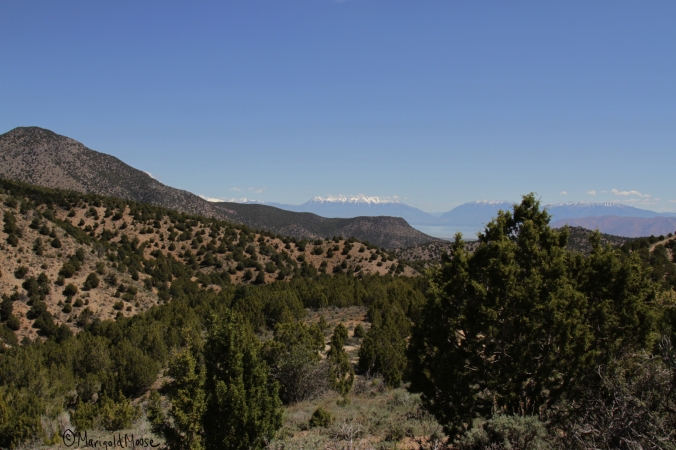
Lake Utah and the Wasatch Mountains beyond the Utah Valley.
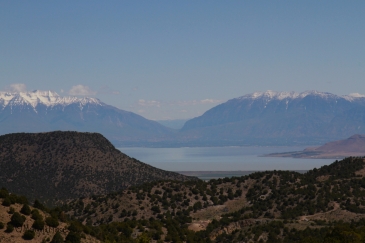
Lake Utah, which was actually much more green than captured here.
If you’re looking for mine ruins and want to skip the Dividend loop and the views above, continue on US 6 instead of turning off. The Dividend road will take you directly back to US 6 as well. Continue southwest on it and you will come to a little town called Eureka, home to about 800 people (and the hometown of the inventor of the Zamboni, Frank Zamboni). Sadly, there was no Zamboni that I saw or even a plaque. No wonder Utah doesn’t have an NHL team.
The remains of the Eagle and Bluebell mines are here, but are also clearly marked as no trespassing. There are actually a lot of structures you can see from outside, though.
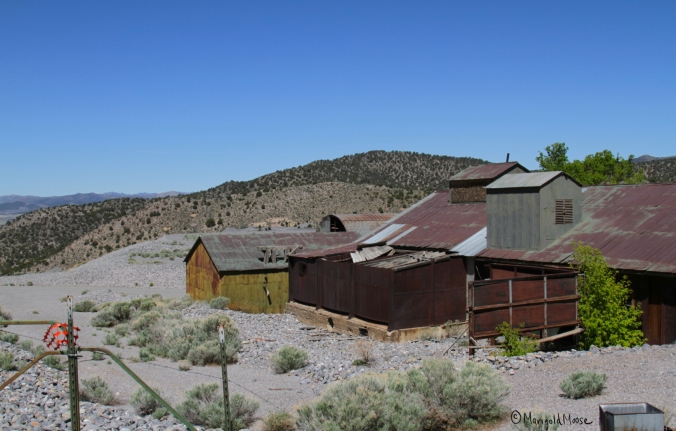
Eagle Bluebell mine buildings in Eureka.
If you head back down to Main Street/US 6 there is a little downtown area that has been kept up pretty well. The Gas Hole gas station is definitely of note.

Please, please tell me they call gas stations this in Massachusetts.
You can visit the Porter Rockwell cabin. Porter was called the “Destroying Angel” and was the bodyguard of Brigham Young (and is probably one of the more interesting historical Mormons, he even brought the first brewery to Utah, a fact we’re still celebrating). The cabin was moved from its original location of Cherry Creek to downtown Eureka to preserve it. It has an interesting thatched roof and one of the creepiest stone signs I have ever seen.

Porter Rockwell cabin in Eureka.
May 1 of this year the cabin’s back door was yanked open, there are signs around the downtown about a reward for information on it. I’m not sure how you could do that with this sign…the eyes really do seem to follow you.
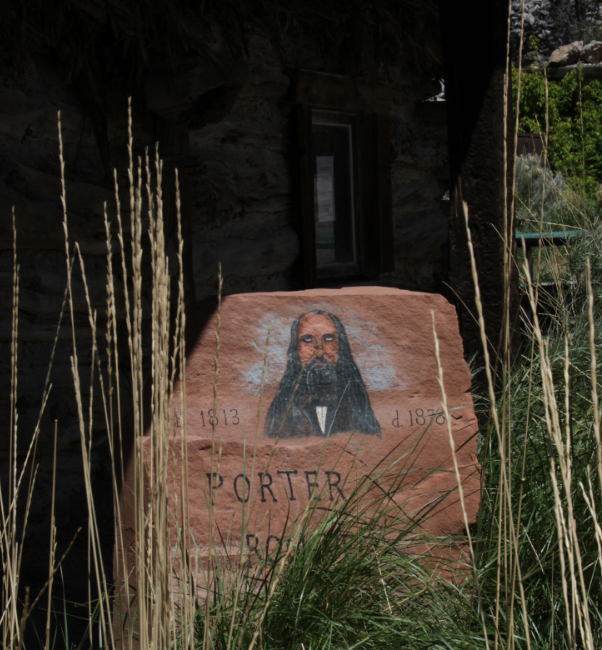
I CAN SEE THROUGH YOUR SOUL.
The downtown main drag has some shops, a fire station, a post office, and a caboose. Yes, a caboose. And no Zamboni. I’m guessing they’re not really big hockey fans out here.
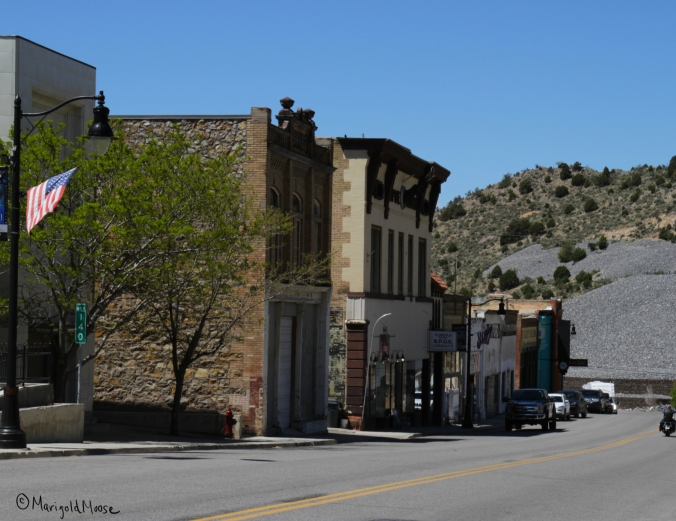
Downtown Eureka.
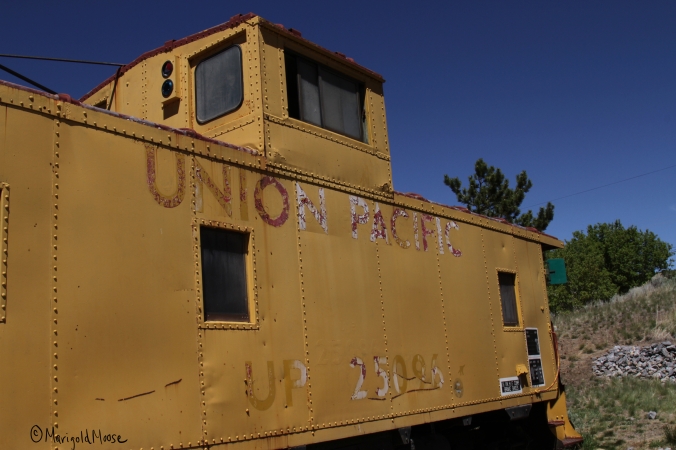
Caboose in downtown Eureka.
There’s also a little restaurant called Porter’s Place. We stopped in as they were advertising ice cream. BYU (Brigham Young University) ice cream to be exact. I had no idea this was a thing, but it was pretty tasty (we had strawberry!). The restaurant has some old timey details, the cash register still works, and the stairway by the bathrooms had some original brick that has been preserved. They also had a collection of old stoves and some penny candy (brought me back to apple orchard field trips, I am still 100% Midwestern). I also appreciated the Apocalypse Pies, but I think they were going for more Book of Revelations than Dean from Supernatural.
Main Street Eureka also has an interesting clock. I’m not sure how it works or why it has an elk (deer?). But again, the eyes follow you. I think it’s a theme in this town. Good thing it was clear and sunny out or I may feel a touch uneasy. Really though, Eureka is a cute little place and the locals are really nice and love to talk history. It’s a great stop when touring the West Desert.
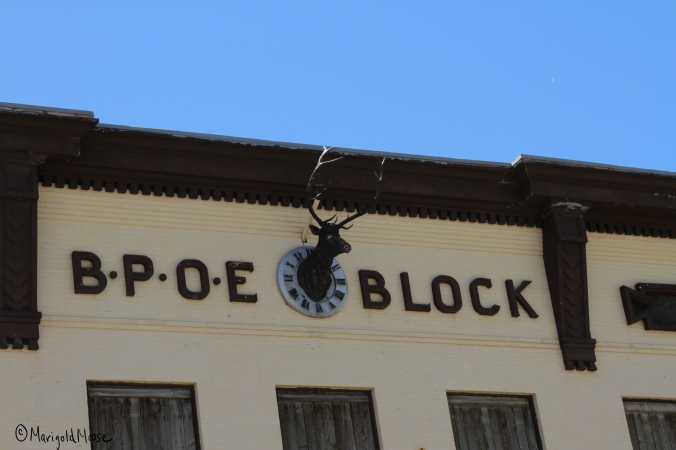
I’m not sure on the how or why of this. Please draw your own conclusions.
After Eureka, we headed to Silver City. This was a somewhat short-lived mining town in the Dragon Canyon area.
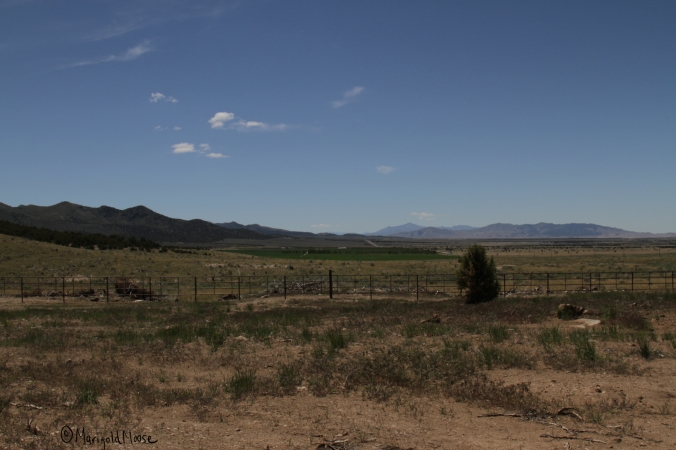
Silver City area near Ruby Hollow.
The local mines produced silver, gold, copper, lead, and bismuth. The town had about 800 people and several shops, saloons, and a post office. Two railroads ran out to the town as well. Unfortunately, the mines started to hit water in the late 1890s and mining declined. A fire hit the town in 1902. A smelter was built in 1907, which brought employment and the town grew to 1500 residents and a third railroad. By 1915 the smelter could not compete with larger operations in Salt Lake City and shut down.
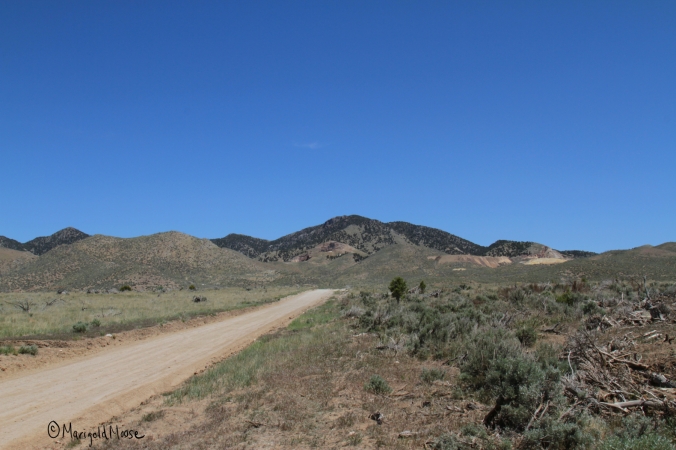
Silver City area looking toward Dragon Canyon.
Some people lived there through the 1940s, but today there is nothing left of the town, aside from a road sign for Silver City. Ruins of the smelter are found easily just after turning off US 6. We did not visit the smelter ruins on this trip, but we snowshoed them before and they are some foundations and mining equipment. There were also open mine shafts, so use caution.
Continue down the same road the smelter is on and you will come to Silver City Cemetery, which is on the list of National Historic Places (as it’s really the only proof the town existed). The plot is very large, but not even half of it has been used (or maybe just is missing markers).

Silver City Cemetery, chained but not locked, presumably to keep grazing cows out.
It is actually a beautiful area and was very peaceful. The area is spotted with small pine trees and small desert plants like sage.
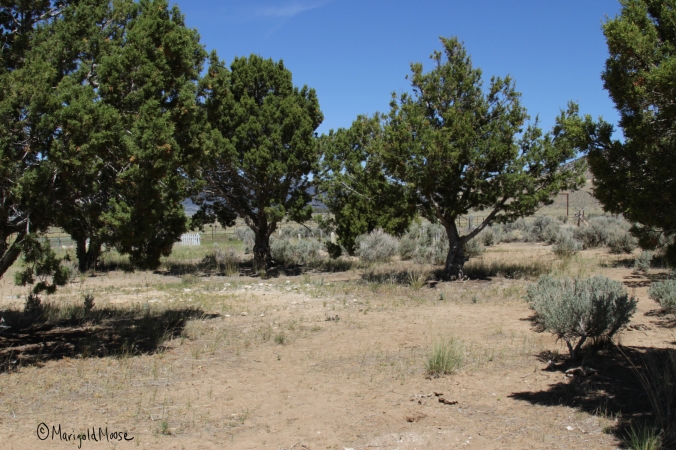
I was surprised by the number of somewhat elaborate (for the time) headstones which must have been expensive back in the late 1800s, as well as the fencing surrounding the plots for families. This metal fence had inlaid glass and was quite beautiful.
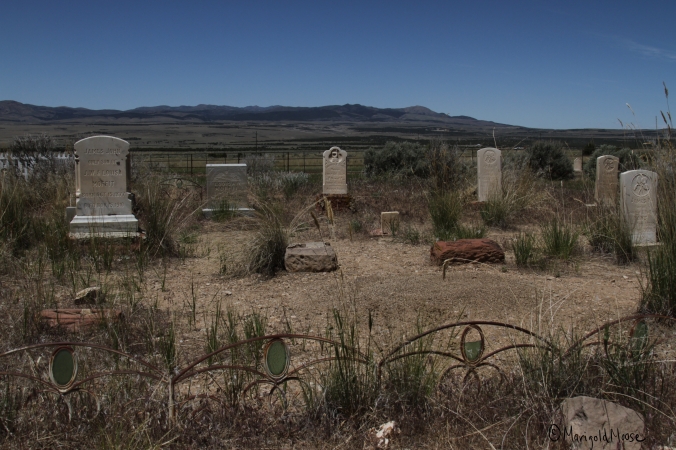
Many are for children, which shows how tough life was then, especially in the newly-developed West. The family with the metal-glass fencing had two sets of twins. I really love the names of these two little girls, Silvie and Goldy, showing the creativity of their parents and a nod to the mining business that provided for them. 
After Silver City, we headed to the Fitch Cemetery before heading home. I didn’t take any pictures there. I kept reading how creepy the place is, but really it is just a family plot surrounded by a stone wall. It is also on the register of historic places and contains a Catholic altar for prayer. It is more recent (much more recent) than the Silver City Cemetery and fresh flowers and plants made it apparent it is not a pioneer cemetery. There is one stone that has tigers on it though, which was really the only thing of note. I guess it may be scary at night, and I saw a raven which may up the spook factor for some.
This trip took about half a day for us, coming from the Salt Lake City metro area. There are other places close that would make it a full day trip, and the Little Sahara Recreation area is nearby.
As far as animal spotting, we saw the hawks and osprey mentioned above on Highway 68 and some Pronghorns (American Antelope) in the same area. Other than that, mostly sheep and cows. We were very, very lucky to see a shopping cart in the wild, though. I had to be very quiet and use all my wildlife photography skills as not to spook him or get charged. This guy obviously escaped captivity and is living the free range life now.

So majestic.





